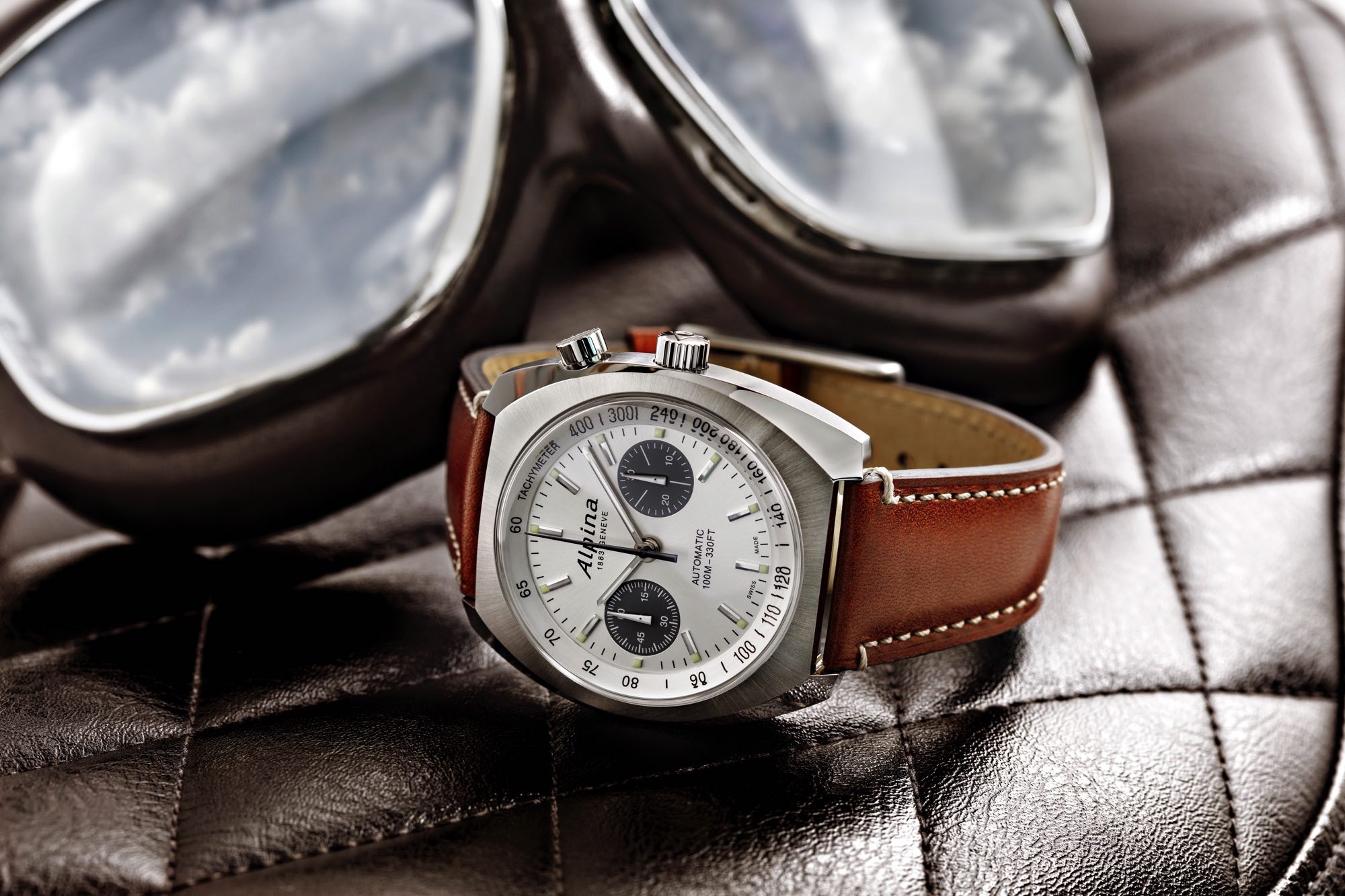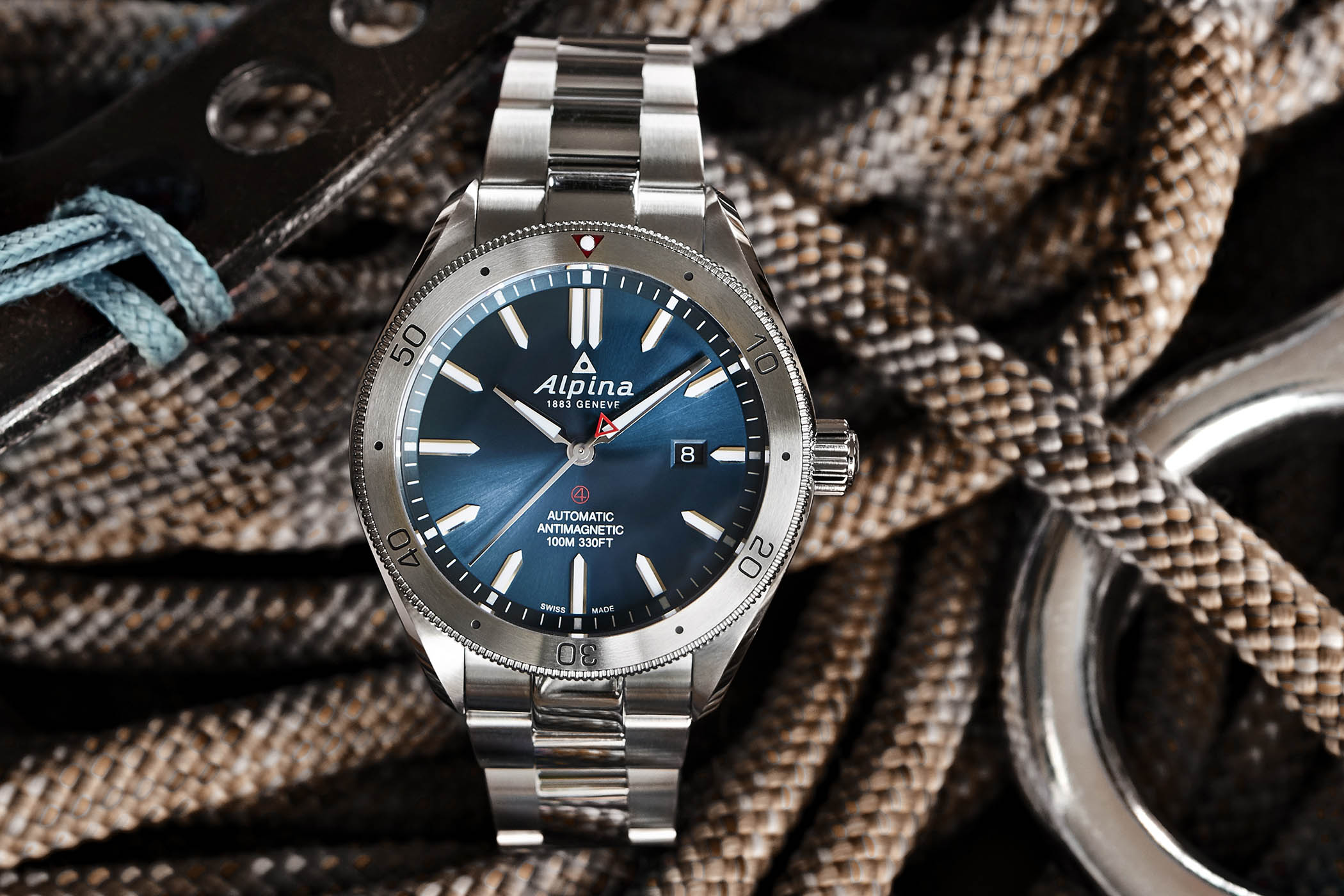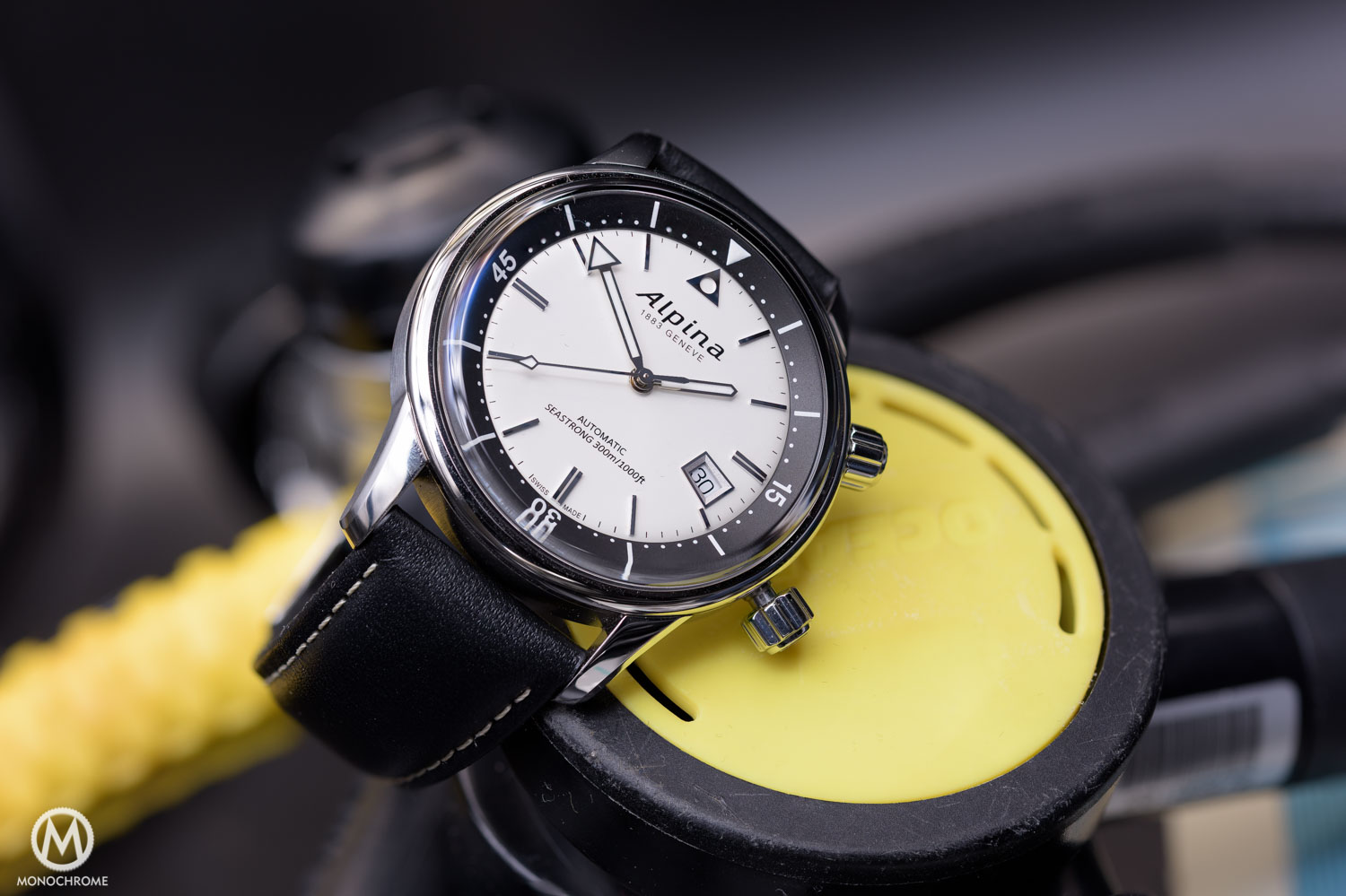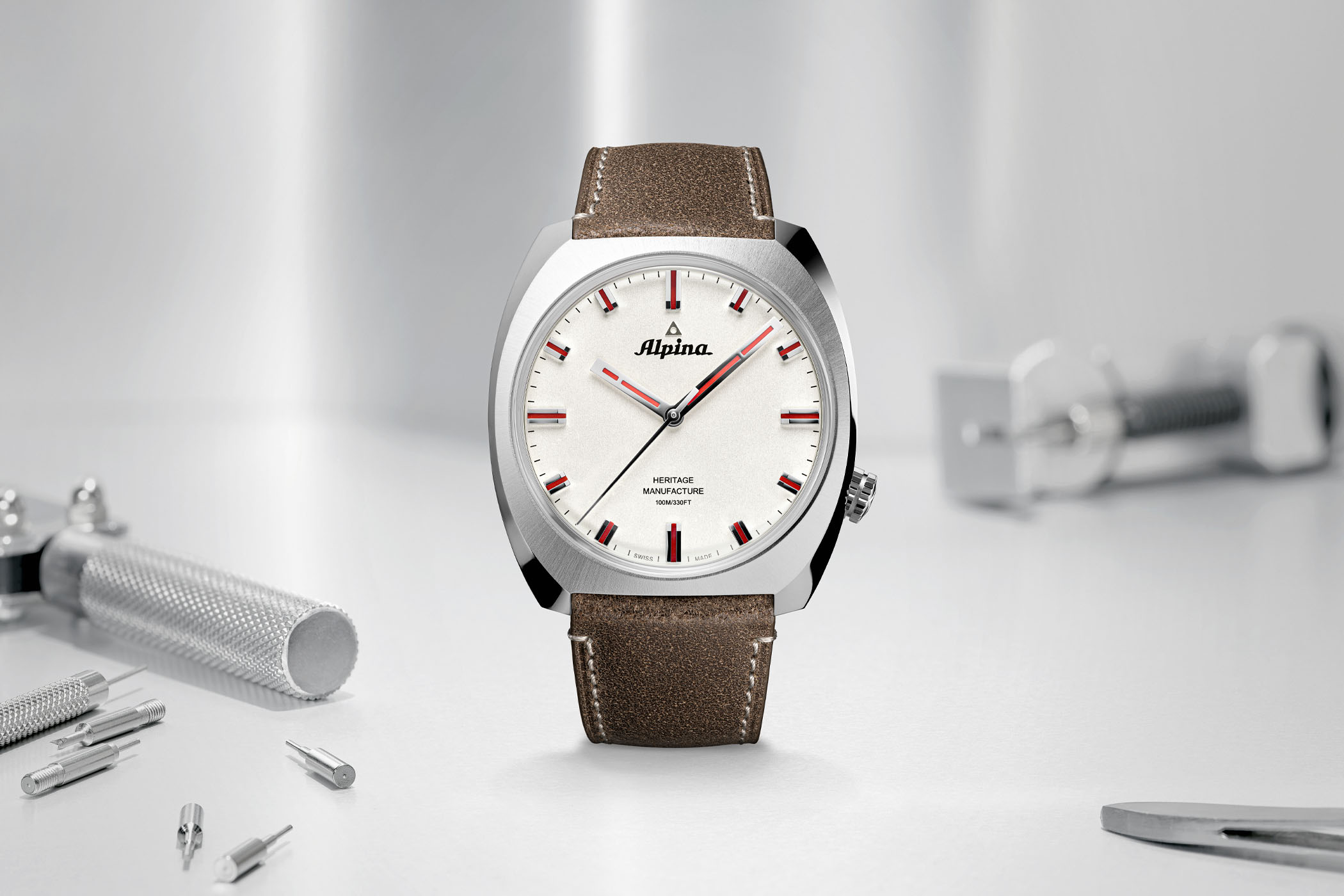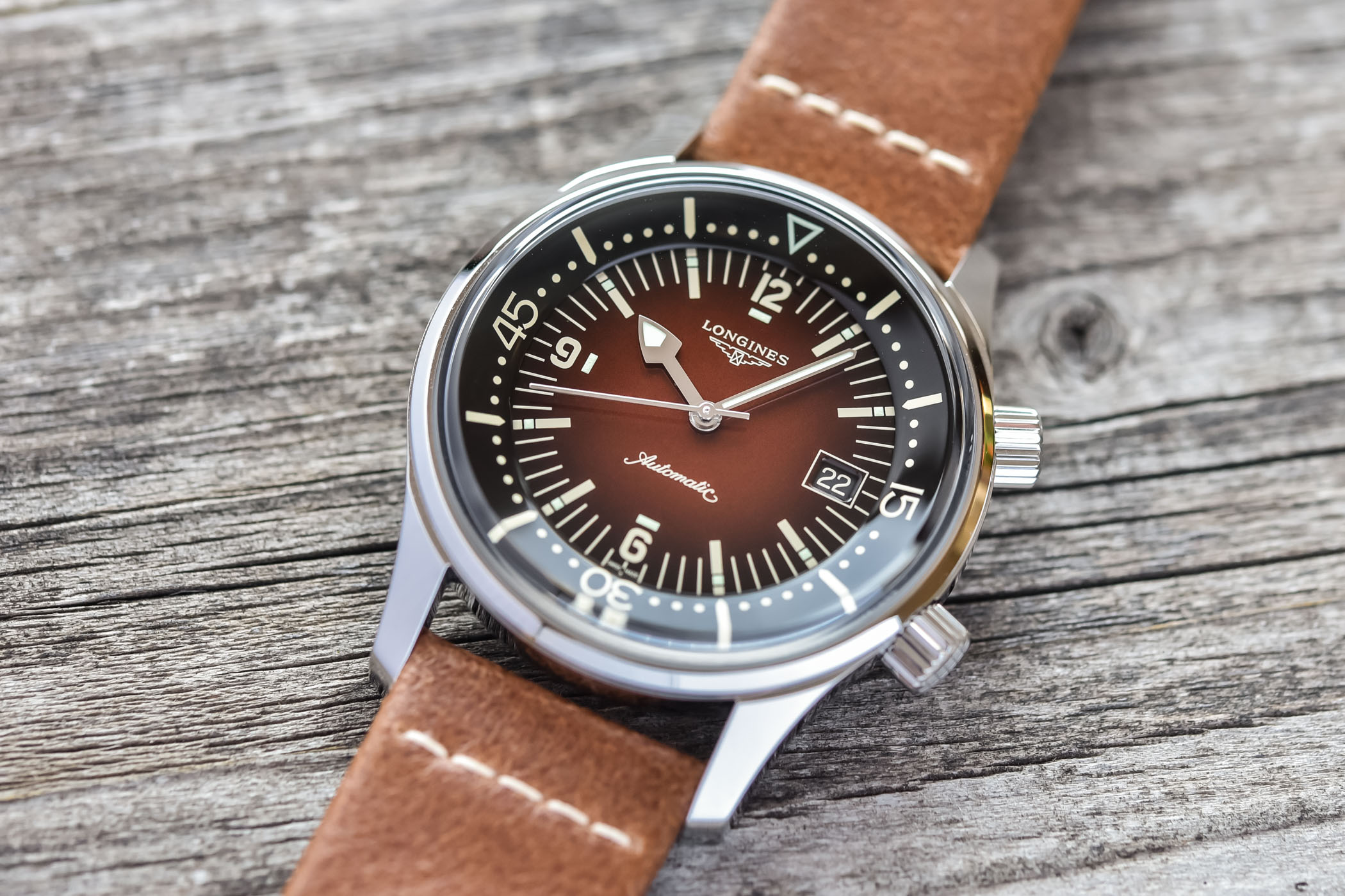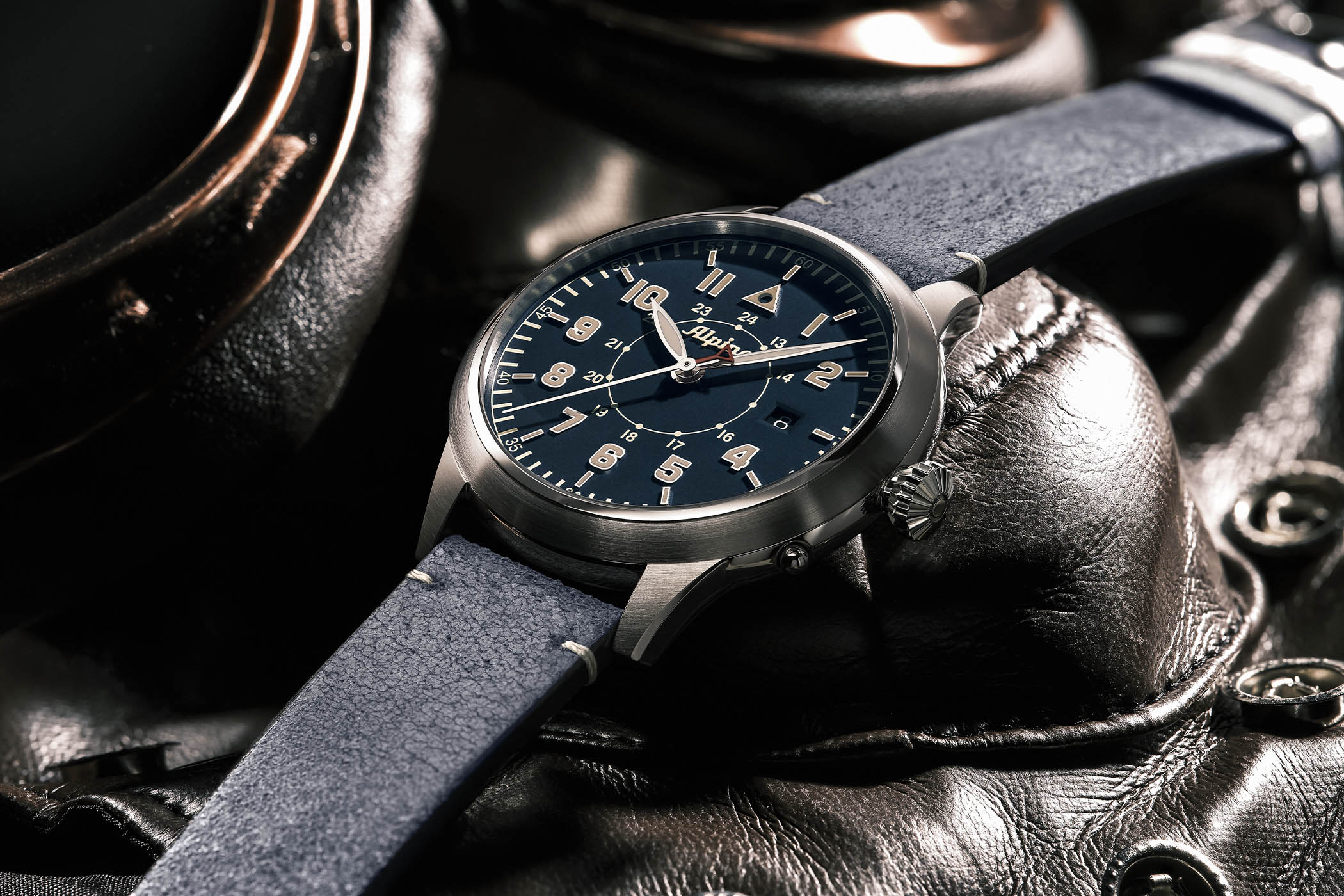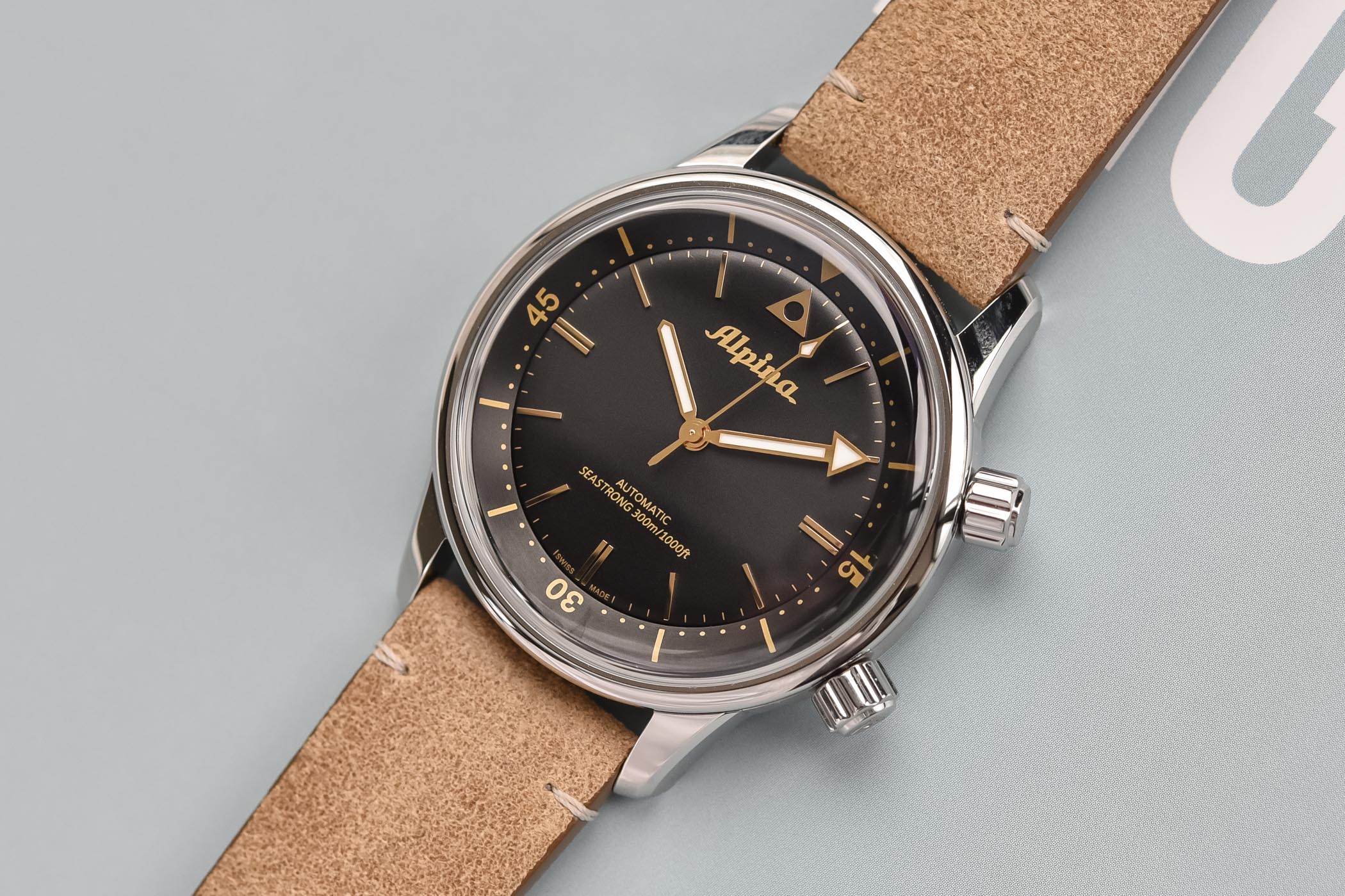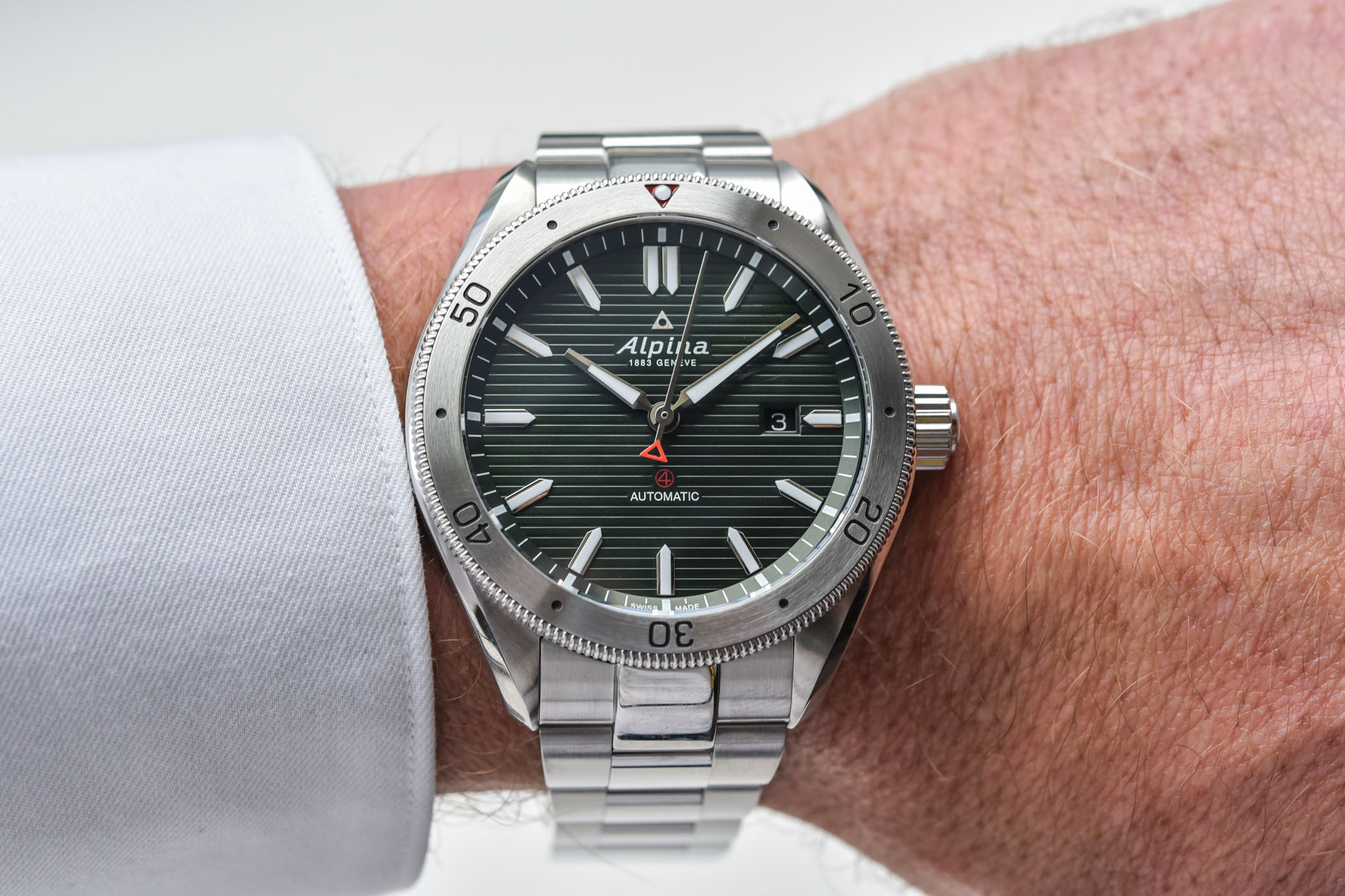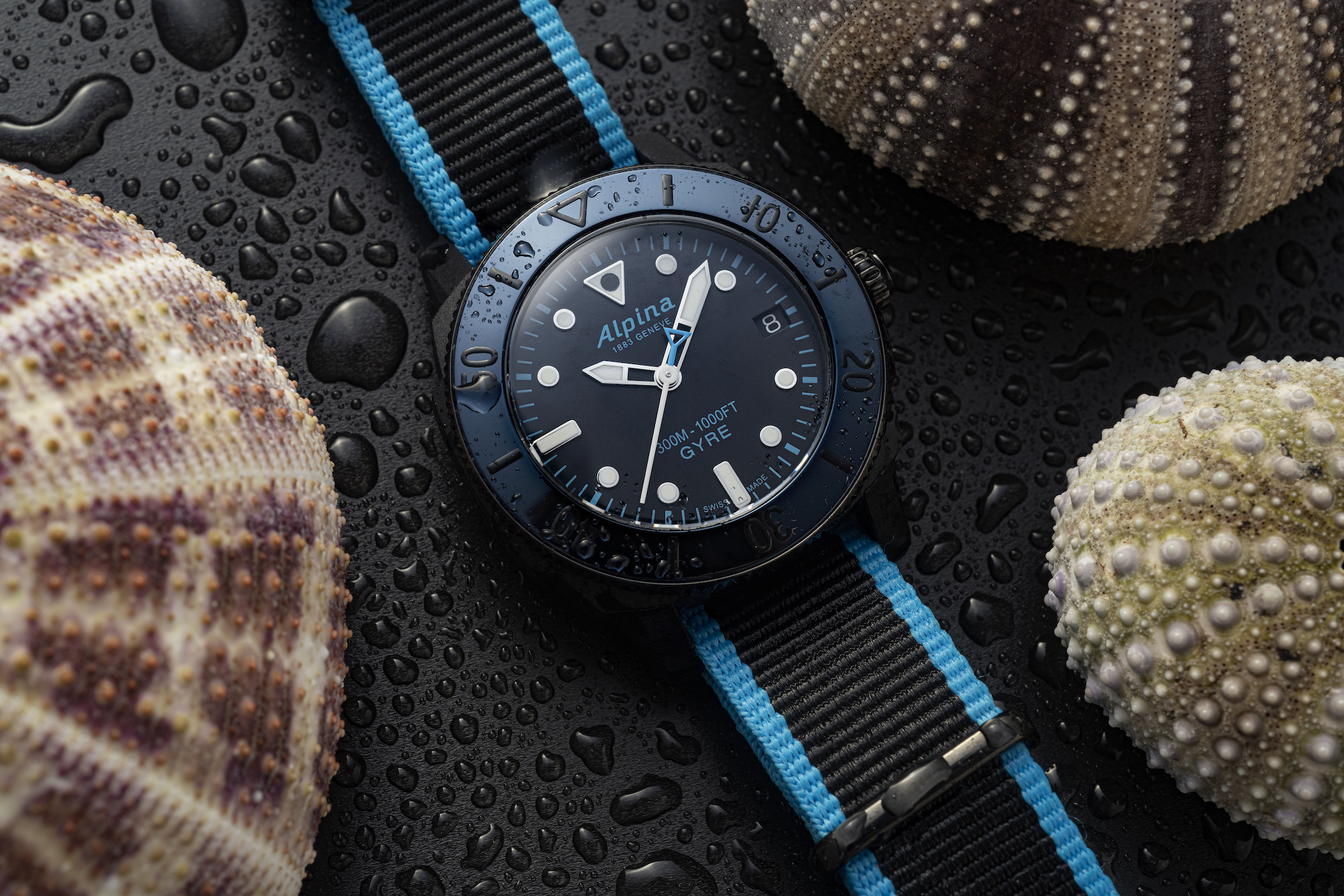Alpina
Swiss luxury watch manufacturer

Alpina was founded in 1883 by Gottlieb Hauser when he formed the Alpina Swiss Watchmakers Corporation (Alpina Union Horlogère ), uniting independent Swiss watchmakers known as Alpinists. The collaborative effort helped develop both movements and watches between suppliers and manufacturers, and in 1890 the Union established its headquarters in Biel/Bienne where member Jacob Straub had his movement manufactory. In 1901, "Alpina" was registered by Straub to mark his 12 and 19 line calibres, identifying them as the Union's highest quality movements. It wasn't until 1908 that "Alpina" was used as the brand name for timepieces (marking the Union's 25th anniversary). The "Alpiner" logo was also used for the first time, the distinctive Alpina red triangle emblem. By 1912, Alpina manufactured its first chronometer and the German navy quickly purchased them the following year. In 1933, the brand produced an innovative sports watch, the Block Uhr, which evolved into the Alpina 4 in 1938, one of the brands signature collections. In 2002, Frédérique Constant acquired Alpina to diversify the company, which was ultimately acquired by Citizen Holdings in 2016. Guido Benedini, formerly with the Swatch Group, is the current CEO.
The brand is known today for its luxury sports watches, which they pioneered over 80 years ago with the Alpina 4. That watch had four key requirements – antimagnetic, antishock, water-resistant and stainless steel – which are still adhered to today. In-house calibres have been a mainstay of Alpina since the Union’s beginnings and in 1945, they debuted their first automatic movement, the calibre 582. The movements were so well regarded, in fact, that the school of watchmaking at the cantonal polytechnic in Biel chose the Alpina calibre 592 as its instructive calibre. Innovations continued with the Alpina 4 Chronograph in 1959 featuring a telemeter and units-meter on the dial, and the Alpina Diver 10 Seastrong in 1969 featuring twin crowns, one of which was used to determine decompression times with an internal rotating bezel. The quartz crisis of the 1970’s and 1980’s hit Alpina particularly hard, however, and almost shuttered the company. Dutch entrepreneur Peter Stas, founder of Frédérique Constant, recognized the historical value and achievements of the brand and acquired it in 2002, potentially saving it from collapse.
Since 2003, the brand developed four new in-house complications – the AL-980 Tourbillon (its first ever tourbillon calibre), the AL-718 World Timer with 24 time zones, the AL-950 Automatic Regulator and the AL-710 Small Date. Alpina certainly wasn’t resting on its laurels under its new ownership. In 2006, the company moved to a new and improved manufacturing site in Geneva. The Alpiner collection was introduced in 2014, 76 years after the first Alpina 4 debuted in 1938, reintroducing the “4” concept for its sports watches. In 2015 the brand invented the Horological Smartwatch with sister company Frédérique Constant. This analog piece used its hands to relay smartwatch functions via an electric module. The AL-760 Automatic Flyback Chronograph was introduced in the same year with patented “Direct Flyback” technology, which significantly increased the reliability and robustness of the flyback mechanism. The AlpinerX, successfully launched on Kickstarter in 2018, was an evolution of the Horological Smartwatch featuring analog and digital displays on the dial.
Although Alpina is now a subsidiary of Citizen Holdings, it still operates as a distinct brand. Collections include the aforementioned Alpiner and AlpinerX, Startimer pilot line, Seastrong divers, Comtesse and Horological Smartwatches. For over 130 years, Alpina has excelled at producing reliable, robust watches and movements for consumers and professionals, maintaining the drive and spirit of its founder, Gottlieb Hauser. The brand has become synonymous with affordable luxury sports watches.

